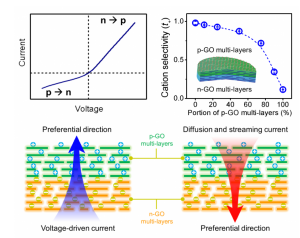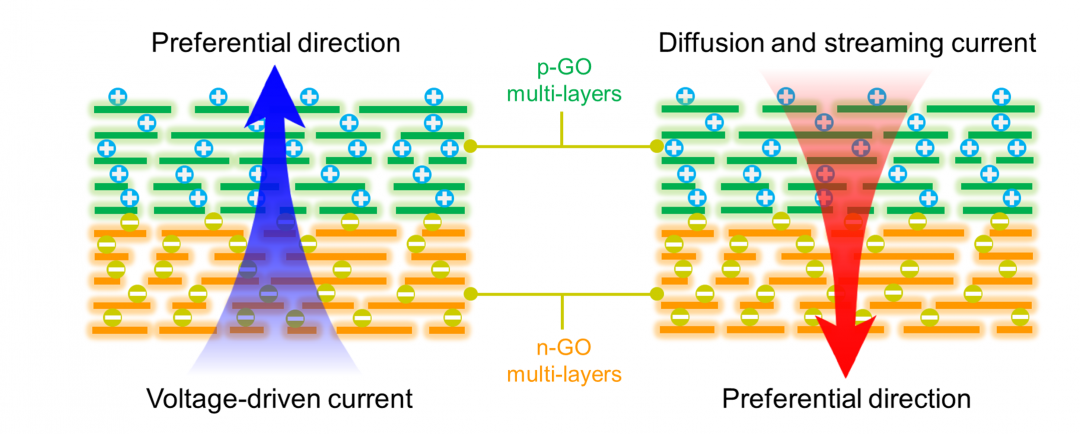Ion transport in nanoscale channels and pores exhibits drastically different properties from those in bulk solution if at least one dimension of the channel approaches the characteristic length scale of the electrostatic, van der Waals, or hydrophobic interactions. In the recent years, nacre-like laminar nanofluidic channels in layered membranes have reduced these channel dimension down to sub-nanometer scale, creating new “2D nanofluidic” devices and materials.
Besides graphene-based materials, a variety of 2D nano-building-blocks have been used to construct functional nanofluidic devices, such as transition metal dichalcogenides (TMDs), transition metal carbides and carbonitrides (MXenes), and even clay-based materials. Currently, most of 2D-material-based nanofluidic systems are homogenous as it is challenging to endow the 2D nanofluidic materials with heterogeneous structures and asymmetric transport properties.
 In a recent paper, Prof. Wei Guo from the Chinese Academy of Sciences and colleagues fabricated a heterogeneous 2D nanofluidic membrane by sequential deposition of negatively and positively charged graphene oxide nanosheets (termed n-GO and p-GO, respectively), and investigated the rectified ion transport properties.
In a recent paper, Prof. Wei Guo from the Chinese Academy of Sciences and colleagues fabricated a heterogeneous 2D nanofluidic membrane by sequential deposition of negatively and positively charged graphene oxide nanosheets (termed n-GO and p-GO, respectively), and investigated the rectified ion transport properties.
The team found that the transmembrane ion transport is asymmetric in the two opposite directions driven by the electric field. The preferential direction of the ionic current is from the n-GO part to the p-GO part. By changing the relative portion of the two oppositely charged GO parts, the membrane can be selectivity modulated from perfect cation-selectivity to anion-selectivity.
“This electrokinetically tunable asymmetric transport feature is general and universal among inter-dimensional nanofluidic heterostructures,” states by Prof. Guo.
It is hoped that the asymmetric transport in heterogeneous 2D nanofluidic membranes will have applications in biomimetic energy conversion, artificial photosynthesis, chemical sensing, and de-acidification technology. Future work in bi-unipolar electrochemistry might be involved in such 2D nanofluidic systems.

















